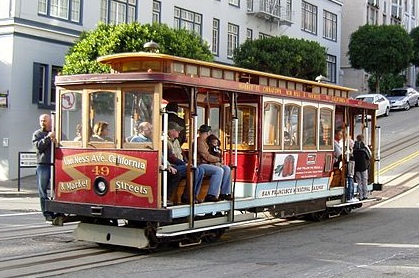Every cloud has a silver lining, and in the case of some natural disasters, there have been great opportunities to take advantage of financial markets after the worst damage has been done. Often when the old has been swept away and new modern construction takes its place an area can be revitalized and get a whole new lease on life.
Since some areas of reconstruction can be highly productive, it is possible to take some kind of advantage after a disaster.
Hurricanes and Stocks
The day after Hurricane Katrina hit the southern coast of the United States and sent New Orleans into a state of disaster, the Dow Jones Industrial rose by over one hundred points, larger than a full percent of its value. Despite dozens of deaths, countless thousands of displaced persons, and billions of dollars in property damage, the economic outlook after the worst hurricane in American history was strong. The same happened after Hurricane Andrew in the early 1990s, Hurricane Hugo in the late 1980s, and even Hurricane Camille in the 1960s.
What proved to be the reason for these upswings in the wake of a disaster? In the case of New Orleans, the economic surge was high because of the specific value of the reconstruction effort. A huge amount of capital needed to be invested into the rebuilding of the city — pumping out water, removing debris, leveling houses, and rebuilding entire communities. The amount of private and public money that went into the reconstruction was phenomenal and the mere suggestion of a rebuild proved to be enough on the first day to merit significant jumps in finance and the stock market.
Trains and Tremors

Following the 1906 earthquake in San Fran in which three-quarters of the city was in ruin, the prospect of building any type of subway appeared to be an impossibility, since the frequent rumblings on the California coast would cause the tunnels to collapse within a matter of months, if not weeks. Instead, the city turned to the over-the-ground trains in order to get transportation up and running. An investment from the Bank of America turned the light rail trains into a common feature of San Francisco, which would ultimately pay great dividends as a tourist attraction and icon of the city.
Between Tornadoes and Nations
One of the worst tornadoes to hit the United States came only last year when Joplin Missouri was the target of one of the worst inland natural disasters in American history. With over one hundred and fifty people dead and much of the town flattened, it appeared that there was no way to rebuild without federal funding since private interests saw no future in the town. One nation, however, saw otherwise. The United Arab Emirates pledged half a million dollars for the cleaning and rebuilding effort of Joplin, a humanitarian endowment that was praised by leaders of both the UAE and the United States. What was not expected, however, was how it would be spent, since the town decided to use the money to give every student a computer for their education. The UAE won the contract to provide these computers, meaning that they were ultimately able to turn a donation into a profitable investment. Once the investment was complete, the UAE government also announced they would match whatever money was raised by the schools themselves.
On November 1, 1755, Lisbon the capital of the Portuguese empire, was leveled by an earthquake, fire, and flood which left 15,000 people dead, and 17,000 of the city’s 20,000 homes were destroyed. But they took the opportunity to rebuild the city with earthquake-proof buildings, wide thoroughfares, and a modern sewer system. Thus the destruction may have helped modernize the city and give it a better competitive advantage in the long run.
However, thinking that wars and natural disasters are “good” because they provide jobs or stimulate the economy is faulty logic. Kerk Phillips associate professor of economics at Brigham Young University in the Deseret News says,
“Natural disasters are bad. They destroy lives and wealth, and that has no upside… When a disaster strikes, it does spur GDP. People work to replace damaged homes and businesses, and that will lead to an increase in income to workers and suppliers of building materials. However, wealth has been destroyed. The resources, time and effort that have been used to rebuild and raise GDP could have been used for some other useful purpose had the natural disaster not happened.”
See Also:
- Hurricane Katrina: The Economics of Disaster
- Flood Coverage Isn’t Included in the Standard Homeowner’s Insurance
- Historically Devastating Hurricanes Would Cause Billions in Financial Losses Today
- Catastrophe Bonds
- Bank Runs Can’t Happen- Right?
Recommended by Amazon:
- Handbook to Practical Disaster Preparedness for the Family
- Urban Preppers with Kids, Pets & Parents: Disaster Survival for the Family
- The Intelligent Investor: The Definitive Book on Value Investing. – The time to buy is when blood is running in the streets.
- Failure to Learn The BP Texas City Refinery Disaster
- What Went Wrong?, Fifth Edition: Case Histories of Process Plant Disasters and How They Could Have Been Avoided
Joshua Turner is a writer who creates informative articles in relation to business. In this article, he explains a few natural disasters which have creates investment opportunities and aims to encourage further study with online safety degrees.
